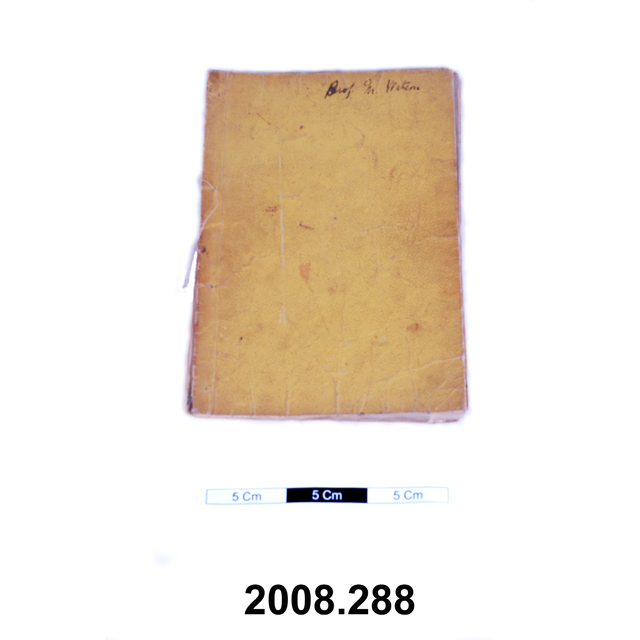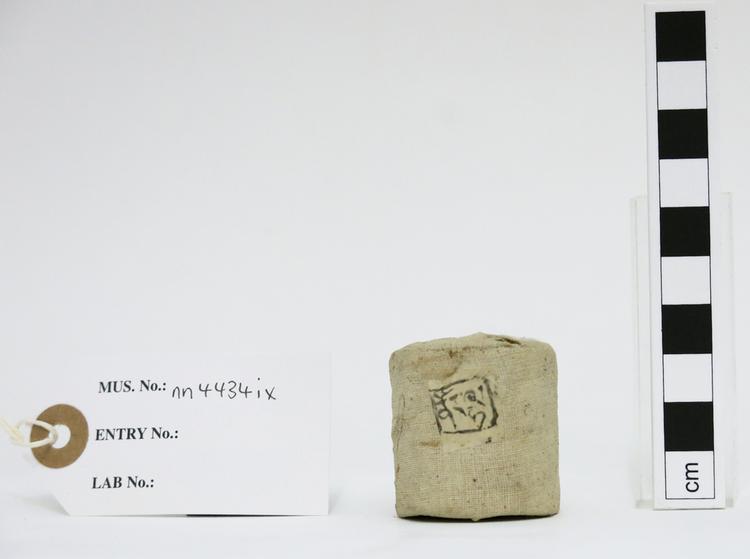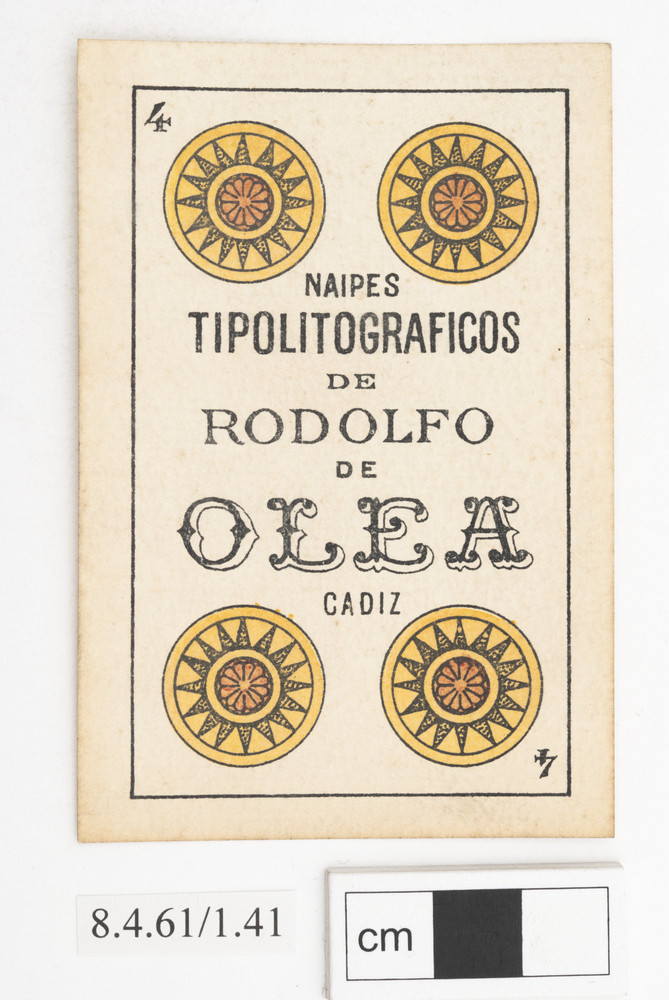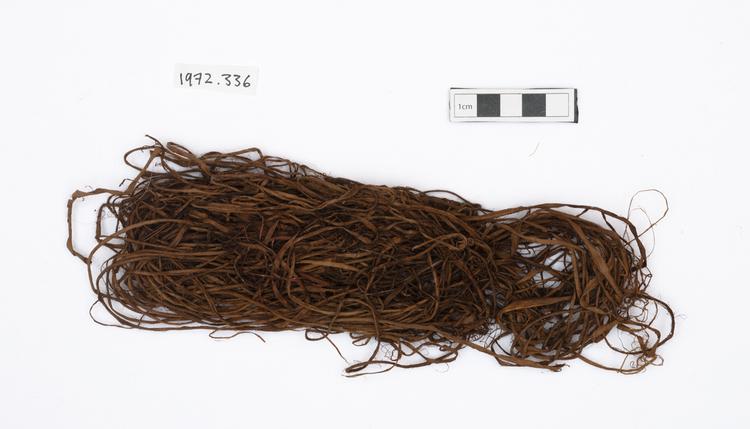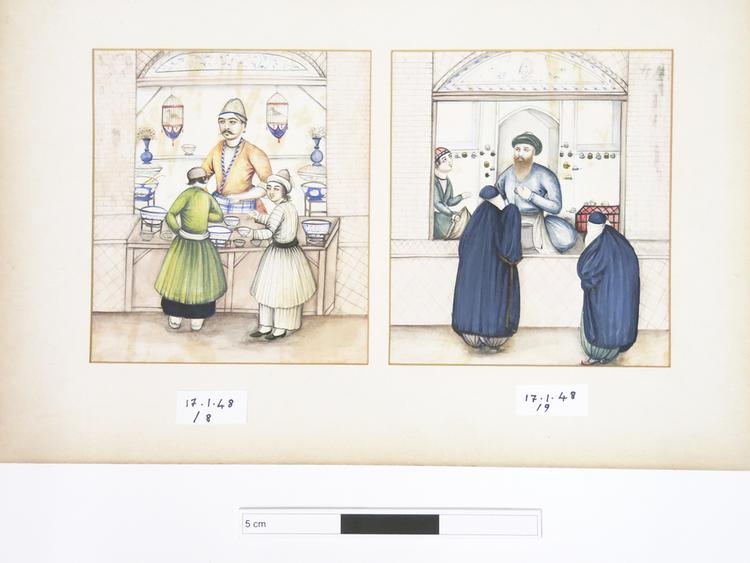
Drawing on paper, tinted and coloured with watercolours. Depicts a male stall holder and his assistant seated on the left selling sprung locks. Two women wearing white ruband face veils over their chadors stand in the foreground, one with her arm raised. Sprung locks hang on the wall behind the stall holder. Mounted in a pair in a cardboard frame.
This painting is one of a series of watercolours which depict scenes that are well known in nineteenth century Persian painting and commercial photography. Judging by the fashions worn by the painting’s subjects they were probably painted between 1850 and 1875, quite possibly for sale to tourists. This example shows a stall holder and his assistant selling sprung locks. Two women wearing white ruband face veils over their chadors stand in the foreground, one with her arm raised. Persian sprung locks can be found in the collections of several museums in the UK. The Horniman is no exception, see for example 8.10.66/5, 8.10.66/5 and 1993.240. Comparable bazaar scenes are illustrated in Henry Ballantine’s ‘Midnight Marches Through Persia’ (1879). The most applicable plate is ‘A Persian Bazar, Ispahan [sic]’ (p162).



